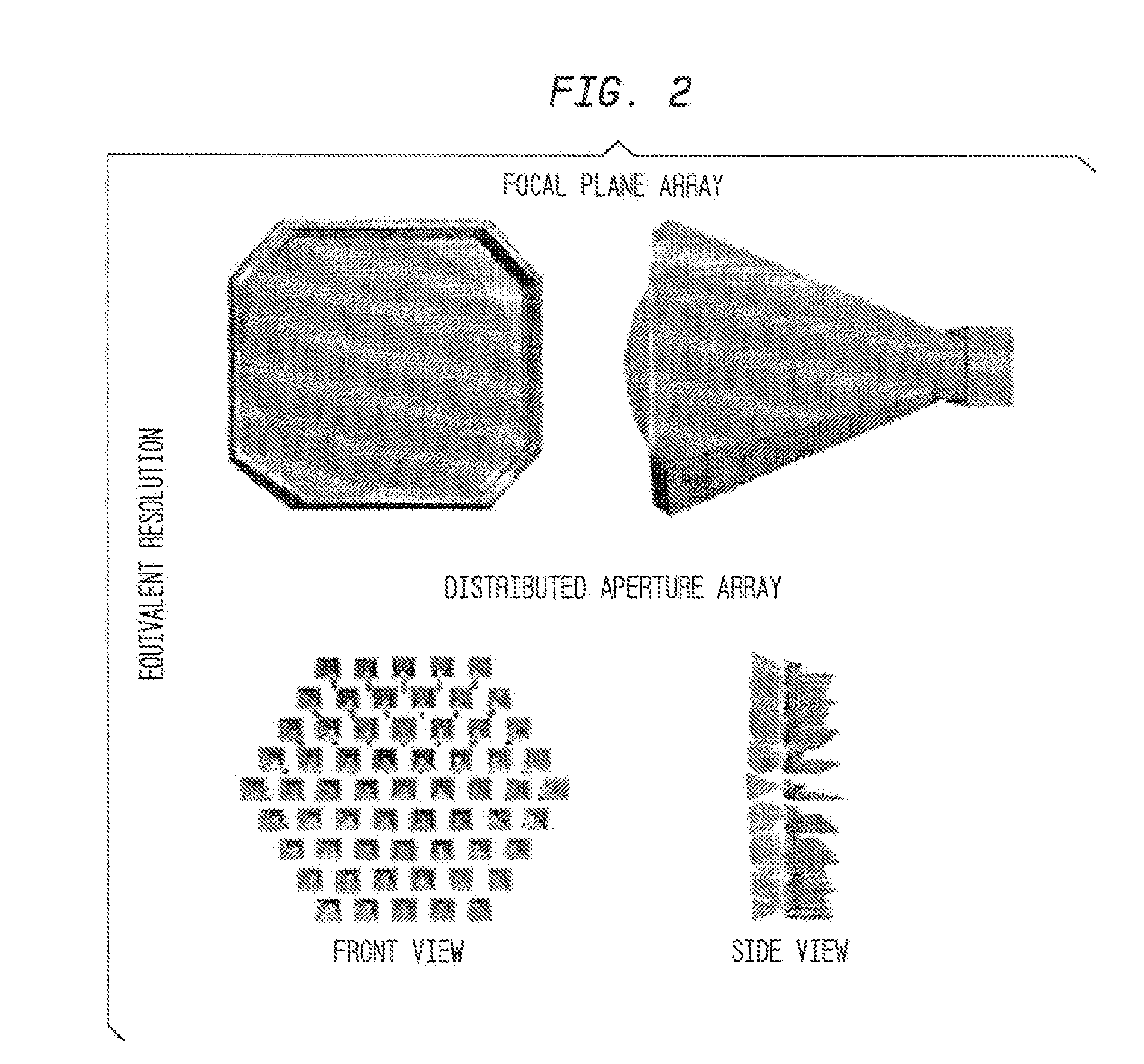Method for controlling the phase of optical carriers in millimeter wave imaging systems using optical upconversion
a technology of optical carriers and imaging systems, applied in the direction of optical radiation measurement, wave/particle radiation conversion of sensor output, instruments, etc., can solve the problems of difficult and expensive implementation of experimental techniques, complicated construction of millimeter-wave transmitters or receivers, and high cost, and achieve less equipment, less equipment, and limited use of expensive environmental control equipment
- Summary
- Abstract
- Description
- Claims
- Application Information
AI Technical Summary
Benefits of technology
Problems solved by technology
Method used
Image
Examples
Embodiment Construction
[0018]The system and method of embodiments of the invention enable the creation of millimeter-wave distributed aperture imaging systems using optical up-conversion. The system and method is a less expensive approach to other imaging systems, such that less equipment is required in a hostile environment and the use of expensive environmental control equipment is limited. Embodiments of the present invention may provide a system and a method that overcomes the aforementioned limitations and fills the aforementioned needs by providing a system and / or method to lock the relative phase of multiple coherent optical signals. Embodiments of the invention provide a means to compensate for optical phase changes induced by vibration or thermal changes in the environment.
[0019]These, and other, embodiments and objects of the present invention will be better appreciated and understood when considered in conjunction with the following description and the accompanying drawings. It should be unders...
PUM
| Property | Measurement | Unit |
|---|---|---|
| frequencies | aaaaa | aaaaa |
| wavelengths | aaaaa | aaaaa |
| phase | aaaaa | aaaaa |
Abstract
Description
Claims
Application Information
 Login to View More
Login to View More - R&D
- Intellectual Property
- Life Sciences
- Materials
- Tech Scout
- Unparalleled Data Quality
- Higher Quality Content
- 60% Fewer Hallucinations
Browse by: Latest US Patents, China's latest patents, Technical Efficacy Thesaurus, Application Domain, Technology Topic, Popular Technical Reports.
© 2025 PatSnap. All rights reserved.Legal|Privacy policy|Modern Slavery Act Transparency Statement|Sitemap|About US| Contact US: help@patsnap.com



